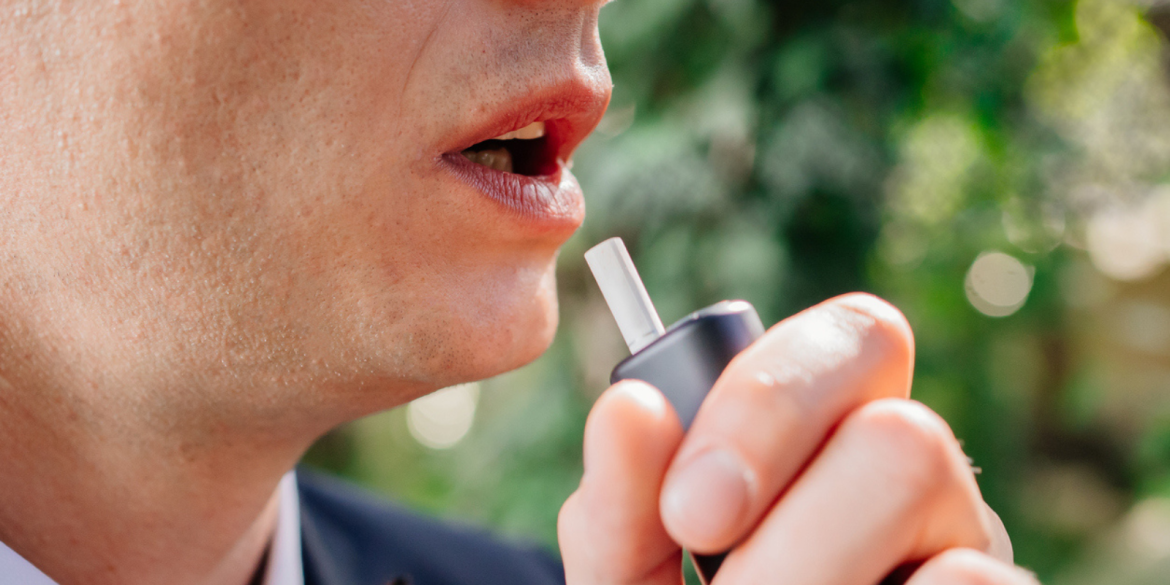
A recent study revealed that there are significant disparities in how Philip Morris International’s IQOS heated tobacco product is portrayed in newspapers and other media aimed at different demographic groups in Israel. Specifically, news media targeted at Israel’s Arab population tends to present IQOS more positively and is more likely to include misinformation regarding its safety, social benefits, and accessibility, often relying on PMI as a primary information source. This contrasts with the portrayal in mainstream media and media aimed at the general public. These differences suggest potential biases which may influence consumer perceptions and behaviours regarding tobacco products.
A recent research initiative led by Doctoral candidate Amal Khayat, Prof. Hagai Levine and Prof. Yael Bar-Zeev from the Braun School of Public Health and Community Medicine at the Hebrew University-Hadassah, together with Prof. Carla Berg, Prof. Lorien Abroms and Dr. Yan Wang from George Washington University has uncovered significant disparities in the portrayal of Philip Morris International’s (PMI) IQOS, a prominent heated tobacco product, among minority groups in Israel.
The research, published in Tobacco Control, found distinct differences in how Arab and Ultra-Orthodox media depict IQOS compared to the mainstream media. Arab media, in particular, tended to present IQOS more positively, and more likely to spread misinformation regarding its safety and social benefits, and frequently relying on PMI as a primary information source. Moreover, Arab media articles emphasised the accessibility of IQOS retail locations, mimicking advertisement.
PMI’s IQOS ranks as the top heated tobacco product globally and was introduced in Israel in 2016. Notably, advertising for all tobacco products, including IQOS, is prohibited in Israel except in print media. However, the study suggests that news media may serve as an alternative advertising channel, circumventing these advertising restrictions.
The favorable depictions of IQOS and PMI in media articles can significantly influence consumer perceptions and behaviours. While paid advertisements are known to target specific demographics, the impact of “earned” media such as news articles on these groups remains less clear.
Methodologically, the study analysed media articles from January to October 2020 from Ifat media, utilising abductive coding techniques. Statistical tests were employed to compare article characteristics across different subpopulations (Arab, Ultra-Orthodox Jews, and the general public). The analysis focused on understanding how IQOS and PMI were framed in the media to assess the tone and content of coverage.
The findings, based on 63 unique articles, revealed significant biases in media targeting of different subpopulations. Specifically, articles directed at Arabs and Ultra-Orthodox Jews portrayed IQOS more positively compared to those aimed at the general public—100% and 75% versus 52%, respectively. Arab media notably emphasised IQOS accessibility (81% versus 17% and 13%) and its social benefits (88% versus 8% and 17%) more prominently. Furthermore, 100% of articles in the Arab media reflected content from the tobacco company press release, compared to 35% in the general public media.
Prof. Levine, senior author: “The study underscores the critical need for rigorous media surveillance and regulatory measures, especially in media outlets targeting minority populations, to ensure fair and balanced reporting. The positive framing of IQOS in minority-targeted media highlights the potential influence of targeted marketing on public perceptions and tobacco product usage across diverse demographics. Minority populations in Israel, and likely in other countries, are not protected from the manipulative vicious marketing strategies of the tobacco industry, corrupting media outlets”.
Amal Khayat, lead author: “We recommend enhanced media surveillance and regulation, particularly in minority-oriented media, to ensure accurate reporting on tobacco products. Understanding how different subpopulations, such as the Arab minority in Israel, perceive tobacco-related information can guide regulatory interventions to counteract potential misinformation and prevent disparities in tobacco-related behaviours. Our study also calls attention to the use of news media as an alternative marketing channel by tobacco companies in regions with advertising bans, advocating for measures to protect public health and mitigate the promotion of potentially harmful products.”
The research paper titled “IQOS news media coverage in Israel: a comparison across three subpopulations” is now available in Tobacco Control and can be accessed at 10.1136/tc-2023-058422.
Researchers:
Amal Khayat, Yael Bar-Zeev, Yechiel Kaufman, Carla J. Berg, Lorien C. Abroms, Zongshuan Duan, Cassidy R. LoParco, Yan Wang, Yuxian Cui, Hagai Levine
Institutions:
1. Braun School of Public Health and Community Medicine, Faculty of Medicine, The Hebrew University of Jerusalem – Hadassah Medical Center
2. Milken Institute School of Public Health, George Washington University
3. Department of Population Health Sciences, School of Public Health, Georgia State University
Funding
This research was supported by the National Institutes of Health (NIH) and the National Cancer Institute (RO1CA239178-01-A1; MPIs: CJB, HL)
The Hebrew University of Jerusalem is Israel’s premier academic and research institution. Serving over 23,000 students from 80 countries, the University produces nearly 40% of Israel’s civilian scientific research and has received over 11,000 patents. Faculty and alumni of the Hebrew University have won eight Nobel Prizes and a Fields Medal. For more information about the Hebrew University, please visit http://new.huji.ac.il/en.
